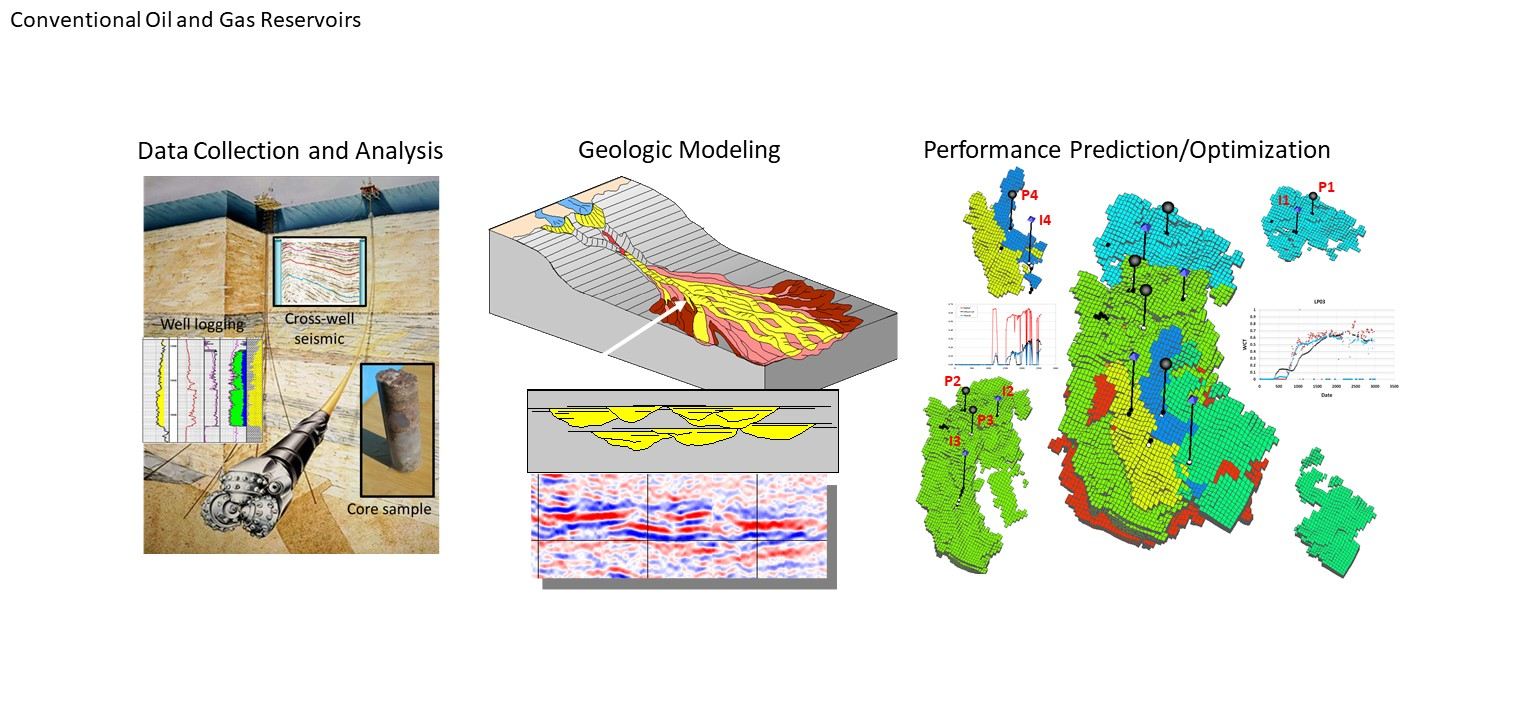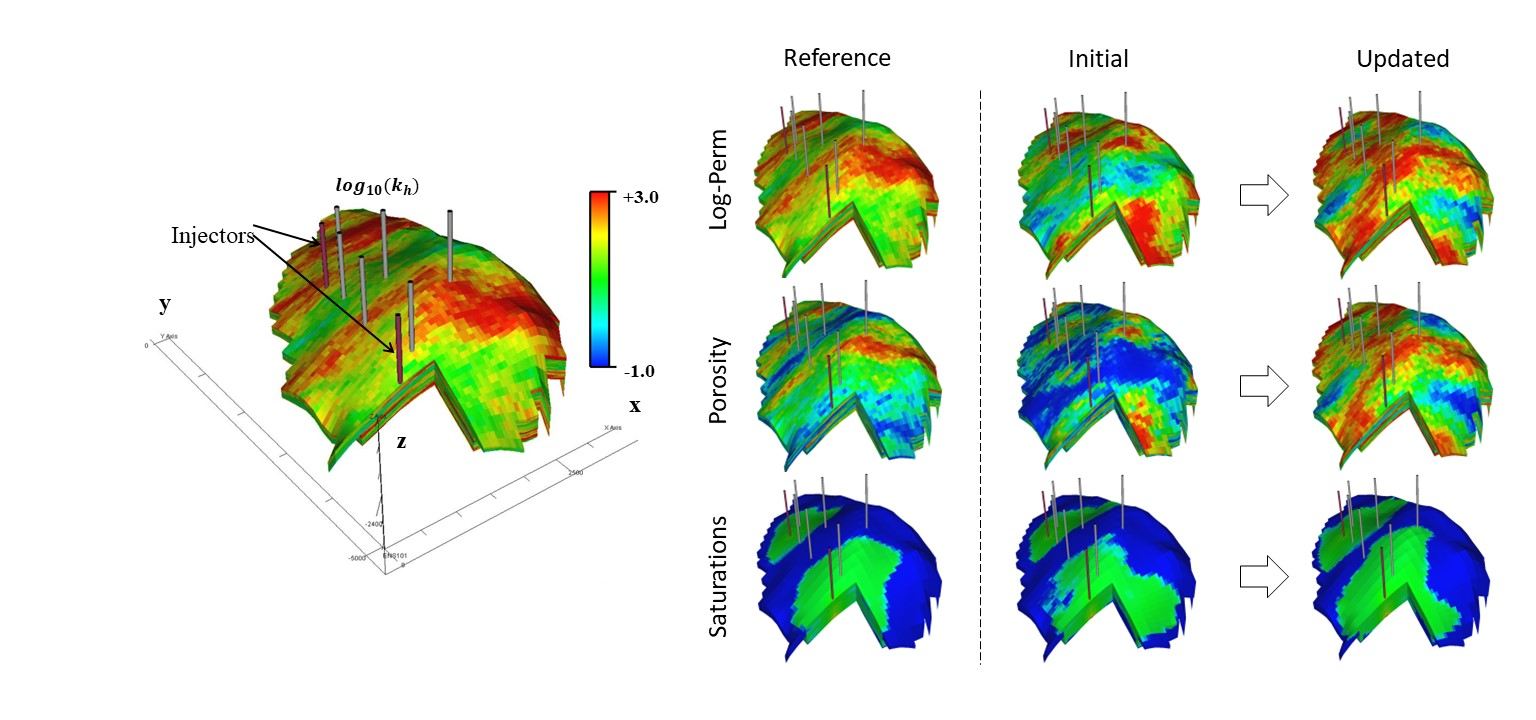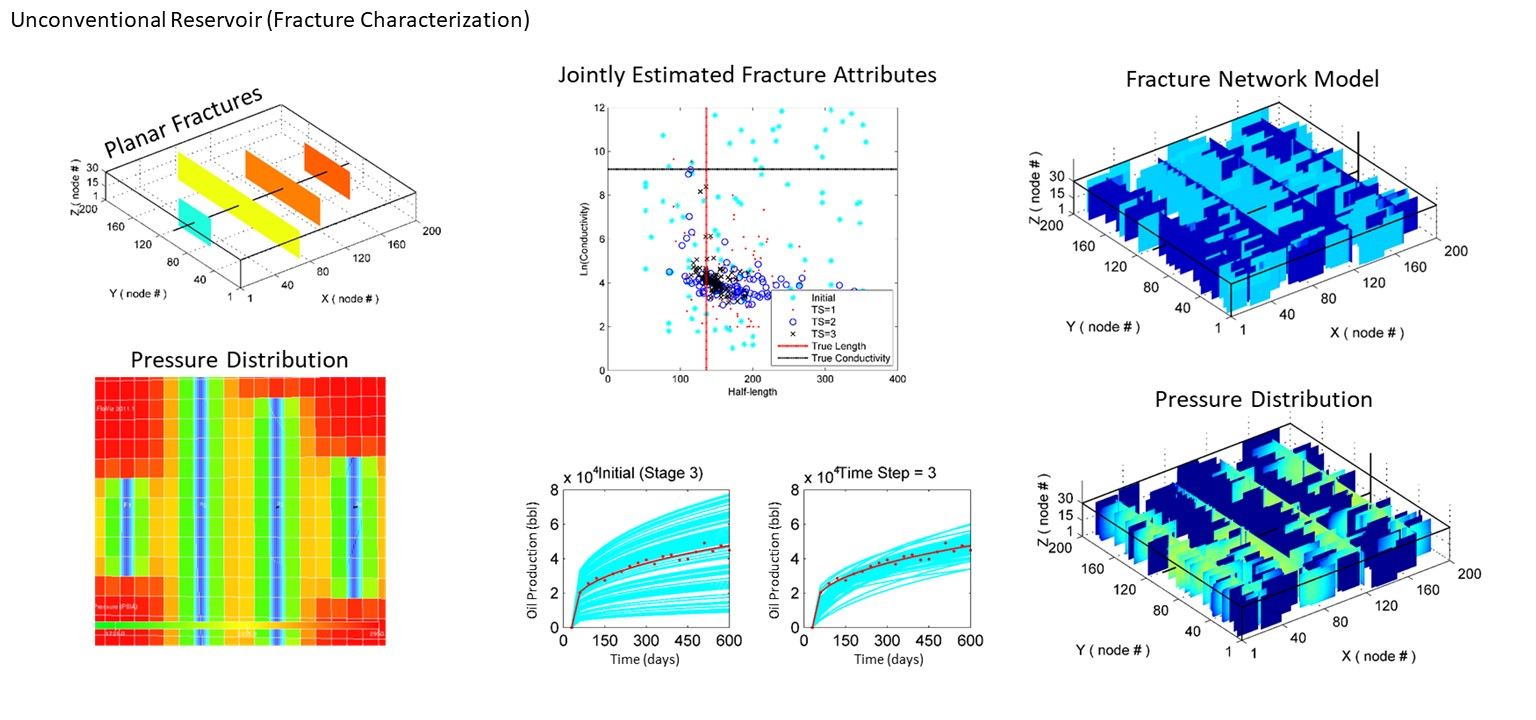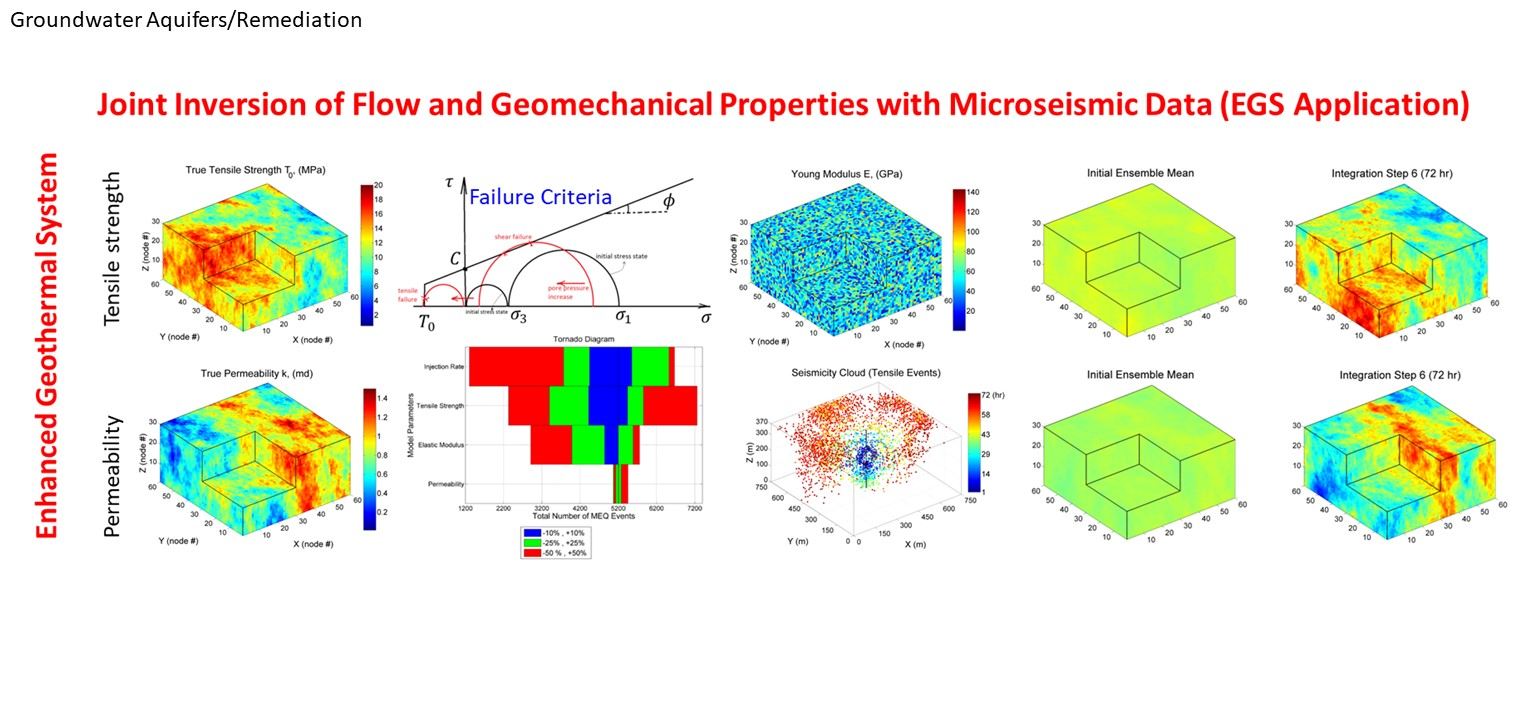The four general research areas of the SEES lab capitalize on knowledge and expertise across several traditional disciplines, including Applied Mathematics, Earth Sciences, Reservoir/Subsurface Engineering, Systems Science and Engineering, and Civil and Environmental Engineering. Our multidisciplinary approaches toward finding solutions to pressing challenges in efficiently developing subsurface resources requires bringing together researchers and graduate students with diverse backgrounds and expertise, and enabling extensive knowledge transfer across multiple disciplines. In turn, the methodologies and solution approaches that we develop can have applications to a wider range of problems across these and other disciplines. Some of the broader applications of the methods we develop can be found in imaging and approximation sciences, such as medical imaging, pattern recognition, machine learning, and artificial intelligence, to name a few. At SEES, however, the main focus of our research studies is on subsurface energy, water, and environmental resources applications.
The main subsurface energy, water, and environmental systems that we investigate include: Conventional Oil and Gas Reservoirs, Unconventional Hydrocarbon Resources, Groundwater Aquifers (Management and Contaminant Cleanup), Geothermal Systems, and Geologic CO2 Storage Aquifers. Some of the emerging technologies in subsurface systems involve hydraulic stimulation to induce fractures and enhance the effective permeability of low-permeability formations. Examples of these systems include oil and gas production from shale reservoirs, energy production from enhanced geothermal systems, and sequestration of CO2 in deep geologic formation. Modeling and analysis of these systems are complex and requires nonlinear coupling effects due to geomechanical considerations, and flow, mass and heat transport. A new research direction in our lab is focused on joint inverse modeling for characterization of multi-physics processes and the related geomechanical as well as flow and transport rock properties. We are also developing novel method for enhanced prediction, model calibration, and optimization of these emerging energy production technologies.







